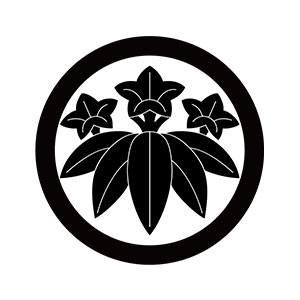Kameyama CastleKameyama City, Mie Prefecture
- spring
- summer
- autumn
- winter
- TOP
- Kansai
- Mie Prefecture
- Kameyama Castle
| Other name | powder butterfly castle |
|---|---|
| castle construction | 1265 |
| address | 575-2 Honmaru-cho, Kameyama City, Mie Prefecture |
- Access to Kameyama Castle
- 10 minutes walk north from Kameyama Station on the Tokai Railway (JR Tokai) Kansai Main Line/Kise Main Line.
HISTORYAbout Kameyama Castle, whose ruins are decorated with cherry blossoms and fallen snow
Ise Kameyama Castle is a flat castle located in Honmachi, Kameyama City, Mie Prefecture. It also has another name, Kochocho Castle. It was built by the Seki clan during the Kamakura period, and during the Sengoku period, it was often used as a battlefield during Oda Nobunaga's invasion of Ise. In the Edo period, it became the residence of the lord of the Ise-Kameyama domain, and as it was a strategic point along the Tokaido route, it was also used as a lodging facility for the shogun's family. This time, let's explain in detail about Ise Kameyama Castle and Ise Kameyama Domain.
- Ise Kameyama Castle until the Sengoku period
- Ise Kameyama Castle is said to have been built in 1265 in Wakayama, Suzuka District, Ise Province by Sanetada Seki, a powerful clan from Ise. The Seki clan, which descended from the Ise Taira clan and ruled Ise, eventually moved its castle to its current location and became the residence of the head family that ruled over the five Seki clans.
In the Sengoku period, Ise was invaded by Oda Nobunaga. Starting with the war in 1567, Ise Kameyama Castle was often used as a battlefield. After Oda Nobunaga subdued Ise, Ujisato Gamo entered Ise Kameyama Castle in 1583.
Later, when Toyotomi Hideyoshi came to rule the country, Yoshikatsu Okamoto became the lord of the castle in place of Ujisato Gamo in 1590. At this time, the castle tower, Honmaru, Ninomaru, Sannomaru, etc. were expanded and remain as remains today. - Ise Kameyama Castle in the Edo period
- When Tokugawa Ieyasu established the Edo Shogunate, Ise Kameyama Castle became the residence of the lord of the Ise Kameyama domain. In addition, since the ``Sekishuku'' of the 53 Stations of the Tokaido is nearby, it was also used as a lodging house for the shogunate in the early Edo period. Three generals, Ieyasu, Hidetada, and Iemitsu, actually stayed at Kameyama Castle. In addition, in the early Edo period, there was an incident in which Tadaharu Horio, the second lord of the Izumo Matsue domain, demolished the castle tower of Ise Kameyama Castle, mistaking it for Tamba Kameyama Castle. The castle tower that was demolished was never rebuilt after that, and in 1636, when Honda Shunji, who became the lord of the castle, carried out major renovations, the Tamon Yagura was built on the castle tower.
- Ise Kameyama Castle after the Meiji period
- In the Meiji period, most of the buildings at Ise Kameyama Castle were demolished due to the Castle Abandonment Ordinance. Currently, the only remains that remain of the time are the castle tower, Tamon Yagura, stone walls, moat, and earthworks. Furthermore, Tamon Yagura is the only core castle building in Mie Prefecture that remains as it was when the castle was built, and is also rare in Japan. For this reason, the castle tower to the southeast of the main enclosure and the Tamon Yagura itself have been designated as a historic site in Mie Prefecture as the ``Old Kameyama Castle Tamon Yagura''.
In addition, the Ninomaru Palace entrance has been relocated to the main hall of Henshoji Temple in Nishimachi. - Current Ise Kameyama Castle ruins
- Municipal buildings such as the city hall are built on the remains of Ise Kameyama Castle. The park pond in Kameyama Park is the outer moat of the castle, and you can also see marker posts for the Temonzeki and Taikomonzeki sites all over the city, so it would be interesting to look for them. In 2006, the Ninomaru Obi Kuruwa and its surrounding areas were restored to their state at the end of the Edo period. In 2011, restoration and repair work began on Tamon Yagura, and the walls of the turret were changed from wooden walls to plaster walls, returning it to its appearance at the end of the Edo period. Additionally, the Kameyama Castle Cherry Blossom Festival has been held every year since 2001, and you can enjoy the combination of cherry blossoms and Tamon Yagura. In addition, when it snows in winter, you can see Kameyama Castle covered in snow, just like in the ukiyo-e print of Hiroshige Ando's 53 Stations of the Tokaido, which is popular with tourists.
Read biographies related to Kameyama Castle
- Tadaaki MatsudairaExplanation about his upbringing, achievements, and life
- There is a man named Tadaaki Matsudaira who was involved in the construction of castles, bridges, and towns in Osaka Prefecture, which are now popular tourist destinations. Tadaaki Matsudaira is one of the famous people in the Kansai region with many achievements. The expansion of urban areas and the

History of the Ise Kameyama domain, whose domain office is Kameyama Castle
| Domain office | Kameyama Castle |
|---|---|
| old area | Kameyama, Suzuka District, Ise Province |
| stone height | 60,000 koku |
| Fudai/Tozama | Fudai |
| main lord | Mr. Seki, Mr. Okamoto, Mr. Honda, and Mr. Ishikawa. |
| Estimated population | 46,000 people (first year of the Meiji era) |
An important transportation hub that includes Kameyama-juku on the Tokaido route. Fudai daimyo, including the Okudaira Matsudaira family, were placed here.












